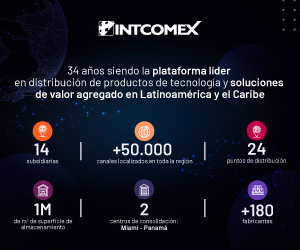Education is the passport to the future, for tomorrow belongs to those who prepare for it today.” But few could prepare for the tipping point we faced in 2020, as the Covid-19 pandemic upended industry after industry, forcing innovation and new ways of working.
This upending has seen widespread impacts, though none have been broader for society as education and its transformation to a largely virtual environment. So, the question is: how can we use this forced learning opportunity to get as much insight into how to effectively deploy technology setups in education that facilitate successful learning in the future.
Did you know that by the end of 2020, 70% of children were in an online distance learning program run by their school?
As schools scrambled to take their classrooms virtual, their disruption placed major strain on parents working from home, while presenting challenges to educators and students alike.
With the adaption to an entirely virtual classroom environment and the technology that enables it, we should be testing the limits of virtual classrooms and how we can effectively migrate to this new medium of distance learning and hybrid models in the future. So, what are the challenges, and how can we use technology to address them?
According to Jabra research, some of the biggest challenges faced have been the social separation from classmates and teachers, as well as attention span and engagement issues. The impact here is felt in the ability to collaborate or engage in a dialogue with students, as one would be able to in a classroom. From our research, this is not relating to time spent in virtual communication, but rather the limits of virtual communications tools available to teachers.
As platforms like Zoom and Teams, which is most dominantly used according to our research, are continuing to roll out features that support education, we can elevate the learning experience by combining with compatible hardware. Add in the right teacher training and schools can maximize their resources, virtual participation and learning outcomes.
As educators digitize their content, and standardize basic concepts and lessons, we know from our data that over half of the teachers we surveyed are using objects in their classes, from whiteboards to post-its and other props, and over 50% are also using various virtual whiteboards or screen sharing to include. Often though, this is through the confines of a built-in web camera. Using the right kind of technology hardware and software to record and distribute these lessons, educational institutions can change their models of knowledge distribution, and focus on developing students in other ways. Using HD audio and video for this is essential, to drive the highest engagement possible, whether pre-recorded or live.
Our data shows that educators predominantly use laptop audio and built-in cameras for lectures. By harnessing certified and compatible hardware, software platforms can integrate with your chosen LMS and solve many of the challenges faced in the current environment. Video fatigue can be reduced via non-distorted humanized video streams, and features like Together Mode from Microsoft Teams, while wide-angle cameras can allow teachers more engaging teaching spaces, whiteboard usage and natural teaching environments. Wireless headsets or speakerphones can also give teachers the ability to clearly be heard in a dynamic teaching setting.
While digital divides still need to be closed, and challenges in virtual education remain prevalent, there are ways to elevate the learning experience in virtual classrooms today. By upgrading to the right technologies and marrying these with your chosen LMS and collaboration platforms, teachers and schools can humanize the learning experience and drive engagement, collaboration, learning and accessibility within distance and virtual learning. Now is the time to test these technologies, deploy them, and empower students and educators to deliver the best possible learning experience in a virtual environment. It is also an investment for the schools because many of them are considering keeping the distance learning available for the upcoming years.
For more information about Jabra technology, please contact our Solution Box specialist Yesenia Valverde at yesenia_valverde@solutionbox.cr








